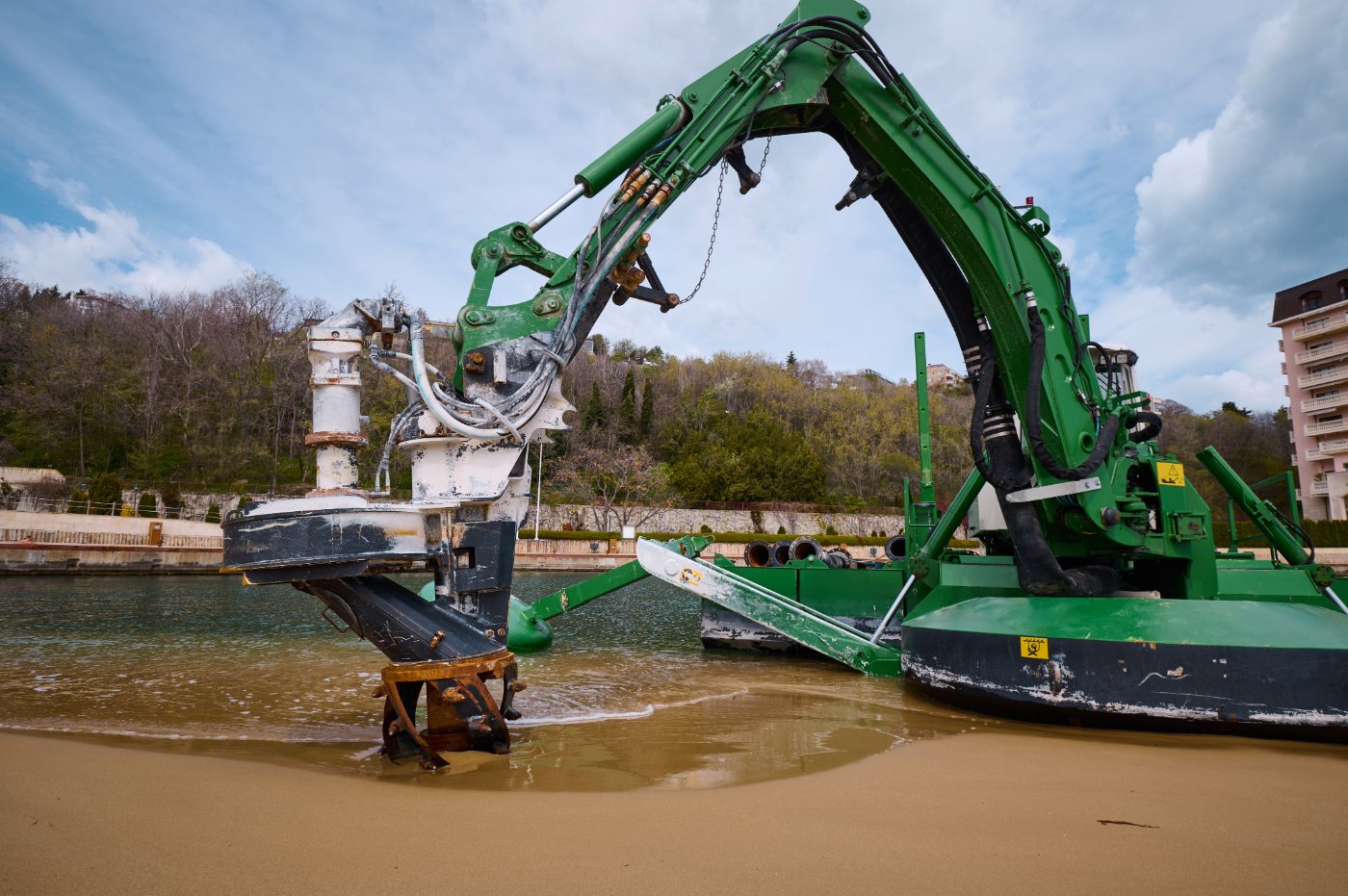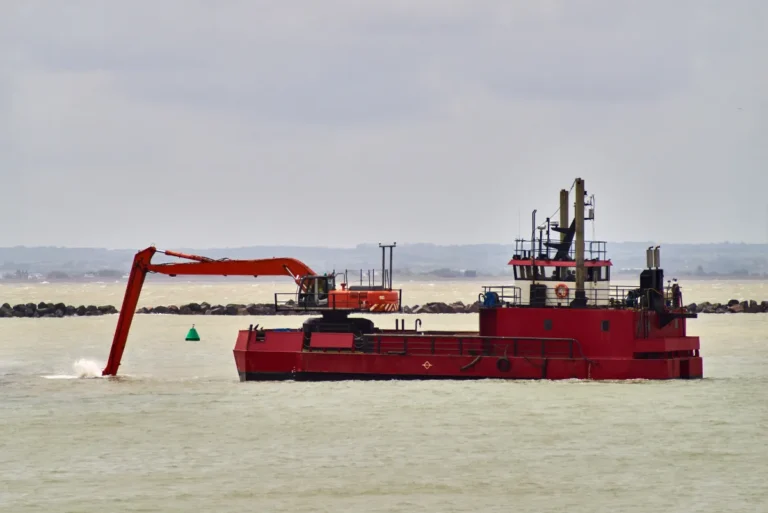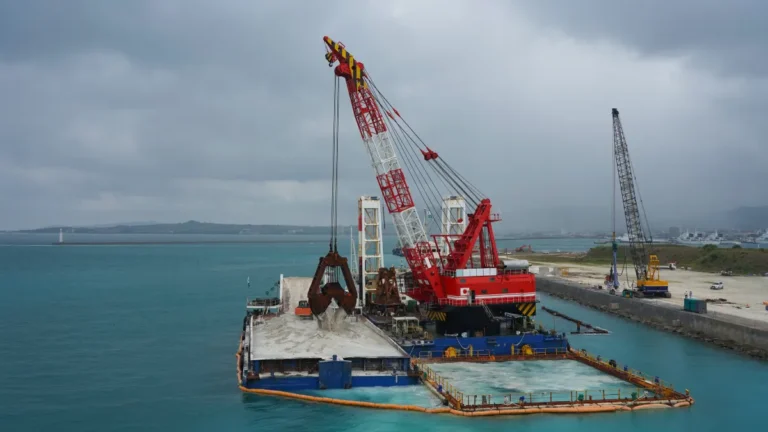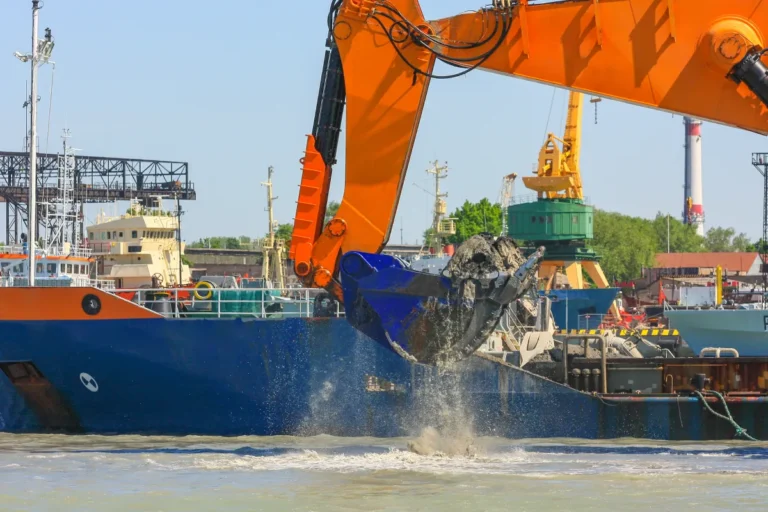In today’s fast-paced dredging industry, efficiency, precision, and adaptability are more important than ever. Traditional dredging methods often fall short in confined or shallow environments, leading to increased costs and longer project timelines. Enter the excavator dredge attachment—a powerful, hydraulically driven tool that transforms any standard or long-reach excavator into a high-performance dredging system. By combining the mobility of an excavator with the capabilities of a dedicated excavator dredge pump, this attachment is redefining how contractors approach sediment removal, especially in challenging environments such as lakes, ponds, canals, and industrial basins. Whether you’re working on environmental restoration or routine maintenance, this versatile tool pairs seamlessly with modern lake dredging equipment to deliver outstanding results.
What Is an Excavator Dredge Attachment?
An excavator dredge attachment is a specialized tool designed to transform a standard excavator into a powerful hydraulic dredging machine. Instead of using a conventional bucket to scoop sediment, this attachment enables continuous pumping of slurry, silt, sand, and other submerged materials directly from the waterbed to a discharge point. It’s an essential upgrade for projects where traditional dredging equipment is too bulky, expensive, or limited in reach.
At the core of the system is a high-performance excavator dredge pump, which mounts to the end of the excavator’s boom or stick. This pump is typically hydraulic-powered and engineered to move solids-laden slurries with high efficiency. The dredge attachment includes a suction head—often fitted with jetting nozzles or cutters to agitate the sediment—along with hoses or pipe connections that transport material to a discharge area. The hydraulic setup is integrated with the excavator’s onboard hydraulics, allowing the operator to manage dredging from the cab with precision and control.
Unlike standard excavator buckets that dig and lift material, the dredge attachment enables continuous suction dredging, eliminating the need for repeated loading and dumping. This results in faster progress, lower labor requirements, and minimized turbidity. The system is compatible with both standard and long-reach excavators, making it suitable for applications like lake dredging equipment setups where extended reach and low environmental impact are essential. This compatibility enables contractors to tackle deep or hard-to-access sediment zones without the need for separate floating or cutterhead dredgers.
Advantages Over Traditional Dredging Equipment
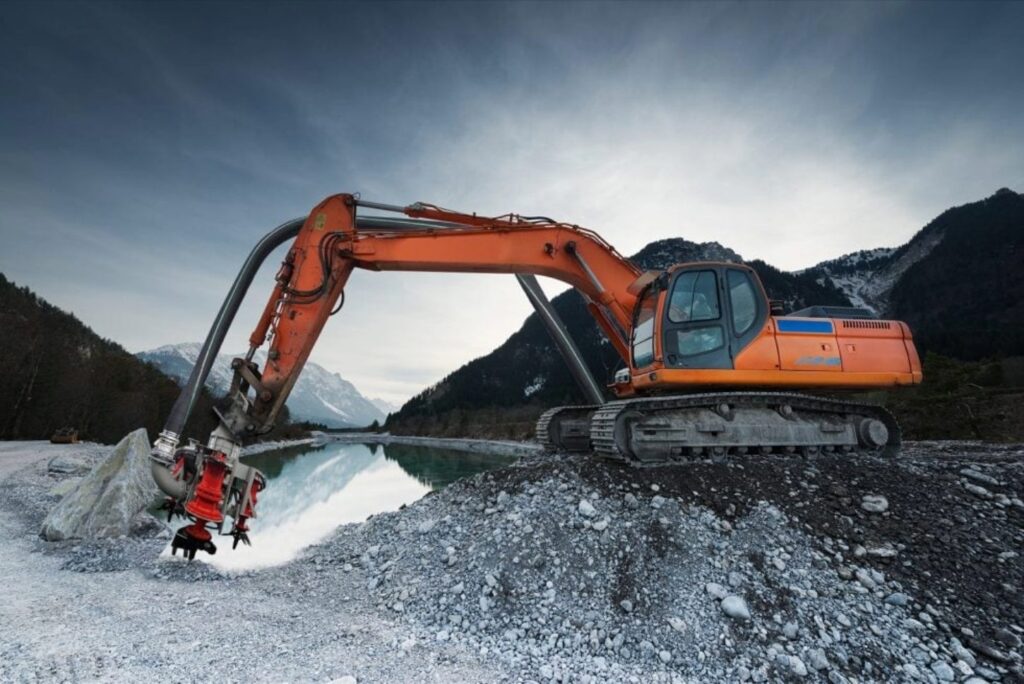
An excavator dredge attachment offers a range of benefits that make it a more efficient and versatile solution compared to traditional dredging equipment. One of the most significant advantages is greater reach and maneuverability. When mounted on a long-reach or amphibious excavator, the dredge attachment can access hard-to-reach areas, such as shorelines, canals, or narrow inlets, without the need for repositioning large equipment or relying on floating platforms.
In shallow or near-shore environments, there’s no need for separate floating dredges. Traditional cutterhead or barge-based dredgers can be cumbersome, especially in smaller lakes or ponds. In contrast, an excavator equipped with a high-performance excavator dredge pump can operate directly from the bank or a stable platform, simplifying logistics and minimizing the environmental footprint. This makes it ideal for lake dredging equipment applications, where precision and low impact are crucial.
Another major benefit is the precise removal of sediment in confined areas. The attachment enables operators to target specific zones with precision, reducing over-dredging and preserving the integrity of the surrounding environment. Whether removing accumulated silt, cleaning stormwater retention ponds, or maintaining waterways, the precision of the excavator dredge attachment stands out.
Finally, there are cost savings on mobilization and setup. Traditional dredging projects often require barges, support boats, crane lifts, and other auxiliary equipment. With a dredge attachment, most of the work can be accomplished using a single excavator, significantly reducing transportation, labor, and equipment rental costs—all while improving jobsite efficiency and project turnaround.
How an Excavator Dredge Pump Works
At the heart of any excavator dredge attachment is the excavator dredge pump, a powerful piece of equipment designed to efficiently move slurry, sand, silt, gravel, and other sediments. This pump mounts directly to the end of the excavator boom or stick, allowing seamless integration with the machine’s hydraulic system. As the attachment is lowered into a water body, the pump draws in material through a suction inlet. It transfers it through discharge hoses or pipelines to a designated dump site.
Powering the dredge pump can be achieved through hydraulic or electric options. Most commonly, these pumps are hydraulically driven using the excavator’s onboard hydraulic system. This setup simplifies installation and provides the operator with full control from inside the cab. In applications where a dedicated power source is available, electric dredge pumps can be used for continuous, energy-efficient operation, particularly in long-duration dredging tasks.
One of the standout features of an excavator dredge pump is its ability to handle high solids content and abrasive materials. Unlike centrifugal pumps, which are prone to clogging, these pumps are specifically engineered for slurry environments, often capable of pumping material with solids concentrations of up to 70% by weight. Whether the job involves mud, fine silt, or coarse gravel, the dredge pump’s internal design resists wear and maintains flow integrity.
Key performance metrics include flow rate, head pressure, and maximum particle size. These specifications determine how far and how high the pump can transport material, which is crucial when working with lake dredging equipment setups where material must be discharged to remote dewatering sites. With the right pump, contractors can achieve high output volumes, maintain consistent suction, and minimize the need for booster pumps or additional handling equipment.
Applications Where Excavator Dredge Attachments Excel
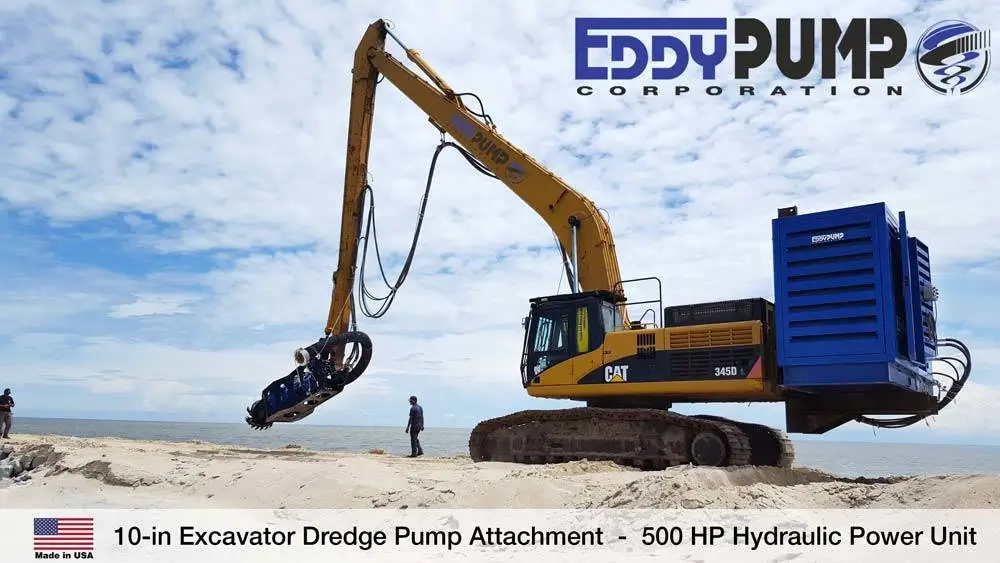
The excavator dredge attachment is a versatile solution engineered to perform in a wide range of dredging environments. One of its most common applications is in lake dredging equipment setups, particularly for removing shoreline sediment. Over time, lakes accumulate organic debris, silt, and algae buildup, which can restrict water flow, reduce depth, and impact ecosystem health. With the ability to work from the shore, an excavator equipped with a dredge attachment and high-solids excavator dredge pump can efficiently remove this material without requiring barges or floating dredges.
These attachments also excel in canal and river maintenance, where precise dredging is crucial to maintain navigable waterways, prevent flooding, and remove sediment buildup that impairs water quality. Their extended reach and fine control make them ideal for confined spaces and shallow banks.
In industrial pond cleaning, such as wastewater lagoons, settling basins, and retention ponds, an excavator dredge attachment provides a high-throughput, low-disruption method of removing sludge and slurry. The excavator dredge pump efficiently handles abrasive and high-viscosity materials, which are often present in these industrial applications.
Tailings pond reclamation is another area where this equipment excels. Tailings—leftover materials from mining processes—can be hazardous and require specialized equipment for safe and efficient removal. A dredge attachment allows contractors to pump out tailings from remote or difficult-to-access locations while maintaining safety and control.
Lastly, environmental cleanup in marshes or wetlands often requires minimal disruption to delicate ecosystems. The excavator dredge attachment’s ability to perform precision dredging from the perimeter makes it ideal for these sensitive areas, offering a more environmentally friendly alternative to conventional methods used in lake dredging equipment applications.
Enhancing Efficiency and Productivity on the Jobsite
One of the biggest advantages of using an excavator dredge attachment is the significant boost in jobsite efficiency and overall productivity. Traditional dredging setups often involve multiple machines, floating platforms, and frequent material handling, which increases the chances of clogging and project delays. In contrast, the streamlined design of a dredge attachment paired with a robust excavator dredge pump minimizes clogs and eliminates the need for repeated rehandling of material. This leads to reduced downtime and a smoother operation from start to finish.
Because the dredging process is continuous, thanks to the suction power of the excavator’s dredge pump, projects progress much faster. There’s no constant loading, lifting, or repositioning required, which translates to shorter completion timelines and more profitable operations. This is especially valuable in time-sensitive applications such as flood prevention or environmental restoration.
Another major productivity advantage is the one-machine setup. By combining a dredge attachment with a single excavator, contractors eliminate the need for support barges, cranes, or separate pumping systems. This simplified logistics reduces setup time, labor costs, and the need to coordinate multiple pieces of heavy equipment, making it an ideal solution for remote or hard-to-access dredging sites.
Safety is also enhanced when dredging from the shoreline or shallow platforms, particularly in applications such as lake dredging equipment projects. Operators can remain on firm ground while reaching deep or submerged areas with precision, avoiding the risks associated with deploying crews or equipment into open water. This combination of efficiency, speed, and safety makes the excavator dredge attachment a preferred choice for modern dredging operations.
Key Technical Specifications to Consider
When selecting an excavator dredge attachment, understanding the technical specifications is critical to ensure optimal performance and compatibility with your existing machinery. One of the first factors to evaluate is the flow rate and pressure compatibility with your excavator. The dredge pump must be matched to the hydraulic output of the host machine to maintain efficient and continuous material transport without overloading the system.
Pumping distance and vertical lift capability are also essential considerations. The selected excavator dredge pump should provide enough head pressure to move heavy slurries across the required horizontal and vertical distances. This is especially important in lake dredging equipment applications, where sediment needs to be transported to distant containment or dewatering sites.
Another vital spec is the maximum particle size and material compatibility. The pump and suction head must be capable of handling the type of sediment encountered—whether it’s fine silt, coarse sand, or abrasive gravel—without clogging or excessive wear. Knowing the solid content the pump can manage helps avoid premature failure and improves jobsite reliability.
The hydraulic flow and power requirements of the dredge attachment should be carefully compared with the excavator’s available hydraulic capacity. Undersized excavators may fail to deliver the power needed for effective dredging, while oversized systems can lead to inefficiencies or increased fuel consumption.
Lastly, ensure hose or pipeline compatibility for discharge. The outlet diameter and hose materials must be able to support the velocity, volume, and abrasiveness of the pumped material. Using the right combination of components ensures that your excavator dredge attachment operates at full efficiency and delivers consistent results across a range of dredging environments.
Matching the Right Attachment to Your Dredging Needs

Selecting the ideal excavator dredge attachment for your operation begins with evaluating key site-specific factors such as lake depth, sediment type, and material volume. For example, shallow lakes with fine silt or organic buildup may only require a low-head dredge pump, while deeper bodies with compacted sand or gravel demand more powerful units capable of higher lift and solids handling. Accurately assessing these conditions ensures the excavator dredge pump performs efficiently without risk of clogging or excessive wear.
Another important decision involves choosing between direct-mount and ladder-arm style setups. Direct-mount dredge attachments offer simplicity and are ideal for short-reach dredging in confined or shallow zones. Ladder arms, on the other hand, extend the suction head farther below the excavator and are better suited for deeper dredging operations, especially in lake dredging equipment deployments where vertical access is critical.
Operational constraints such as limited space, restricted access points, and local permitting requirements must also be factored into your selection. Urban lakes, stormwater retention basins, or industrial ponds often present unique challenges that demand compact, low-impact solutions. In such cases, a properly configured excavator dredge attachment can operate from the bank or a temporary platform without disturbing surrounding infrastructure.
Understanding when to choose an excavator-mounted system over traditional pontoon or barge setups is crucial to optimizing productivity and cost efficiency. Excavator-mounted dredge pumps are best for near-shore applications, smaller dredging zones, or rapid-response jobs where mobilization speed is crucial. For larger, open-water dredging projects, traditional barge-mounted systems may still be necessary. Still, for many applications, the flexibility and performance of an excavator dredge attachment make it the more practical choice.
Maintenance and Operational Best Practices
To ensure peak performance and long-term reliability of your excavator dredge attachment, implementing a consistent maintenance routine is essential. Begin with routine inspections and wear part replacement, focusing on high-stress components like the impeller, wear rings, and seals within the excavator dredge pump. Regularly checking these parts for erosion or damage helps prevent unexpected failures during operation, especially in abrasive or high-solids environments common in lake dredging equipment applications.
Thorough hose and pump cleaning procedures should be followed after each dredging session. This includes flushing the pump and discharge hoses with clean water to remove residual slurry or sediment buildup. Neglecting this step can lead to internal clogging, corrosion, and performance degradation over time.
To improve overall system reliability, apply best practices for optimizing hydraulic system efficiency. Ensure the hydraulic fluid is clean and at the proper level, monitor operating pressures, and routinely inspect hoses and fittings for leaks. Efficient hydraulic flow not only enhances the performance of the dredge pump but also reduces energy consumption and wear on the excavator.
Equally important is operator training and adherence to safety protocols. Operators should understand the functional limits of the excavator dredge attachment, be familiar with pump control systems, and recognize early signs of cavitation or clogging. Proper training ensures safe handling of both the dredging process and the hydraulic power system, particularly when working on sensitive or remote sites using lake dredging equipment.
Integration with Modern Dredging Systems
Today’s excavator dredge attachment is more than just a mechanical tool—it’s a fully integrated component of advanced dredging systems designed for precision, automation, and scalability. One key enhancement is RTK GPS compatibility, which enables precise depth control and accurate dredging across the worksite. When paired with RTK or GNSS positioning systems, operators can monitor dredge depth in real-time, ensuring accurate material removal and minimizing over-dredging, especially in regulated environments or lake dredging operations.
Modern systems also support remote or automated pump controls, allowing operators to adjust pump speed, monitor pressure, and manage flow rates directly from the excavator cab or an external control station. These features reduce the need for manual adjustments and enhance operational efficiency, especially during long-duration dredging tasks.
An excavator dredge pump integrated into such systems complements other dredging components such as floating pipelines, dewatering units, and sediment collection areas. This makes the excavator dredge attachment a flexible asset that works in tandem with other lake dredging equipment, improving workflow coordination and reducing the need for additional heavy machinery.
For projects that require long-distance sediment transport, these attachments are also compatible with booster pumps. Booster stations can be added along the discharge pipeline to maintain high flow rates over extended distances or elevation changes. This capability significantly expands the range and application of excavator-mounted dredging systems, making them viable for large-scale remediation, environmental restoration, and the maintenance of industrial ponds.
Cost-Benefit Analysis
Investing in an excavator dredge attachment may incur a significant upfront cost. Still, the long-term return on investment (ROI) makes it a cost-effective solution for many dredging operations. When compared to traditional dredging systems, such as cutterhead dredges or barge-mounted setups, the attachment significantly lowers ongoing operational expenses. A well-matched excavator dredge pump enables high-efficiency material transport, minimizing downtime and reducing the total number of dredging hours needed to complete a job.
One of the most immediate cost benefits is the reduction in workforce and auxiliary equipment. Traditional dredging often requires a full crew to manage floating platforms, support boats, and separate pumps. In contrast, an excavator-mounted system consolidates all functions into a single machine, reducing labor costs and simplifying logistics.
There are also notable savings in fuel and transportation. Since the excavator and dredge attachment can often be delivered to the jobsite as a single unit, transportation is both faster and more cost-effective. Once on site, the system consumes less fuel compared to large floating dredgers, particularly when working in shallow or confined zones, such as those common in lake dredging equipment projects.
Finally, the versatility across multiple projects and environments adds to the economic value. Whether working on stormwater ponds, environmental remediation, canal maintenance, or lake dredging, the same excavator dredge attachment can be deployed repeatedly with minimal reconfiguration. This flexibility not only maximizes equipment utilization but also enables contractors to bid competitively across a wider range of dredging applications.
Conclusion
The excavator dredge attachment stands out as a smart and scalable solution for contractors seeking to streamline operations, reduce costs, and enhance productivity across a wide range of dredging applications. With its ability to handle abrasive materials, operate in tight spaces, and integrate with advanced technologies like GPS and booster pumps, this tool delivers both immediate and long-term value. Whether you’re managing a single-site lake restoration or tackling diverse sediment removal projects, investing in an excavator-mounted dredge pump offers unmatched flexibility, performance, and return on investment (ROI). For anyone looking to modernize their lake dredging equipment strategy, the excavator dredge attachment is truly a game-changer.


